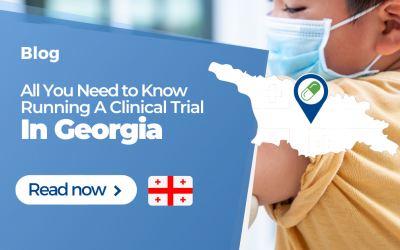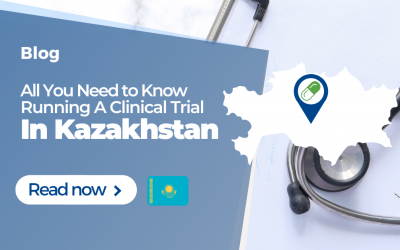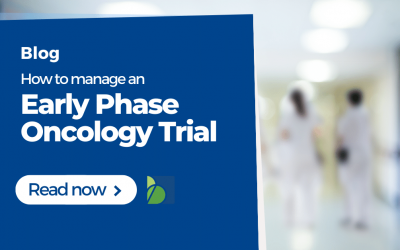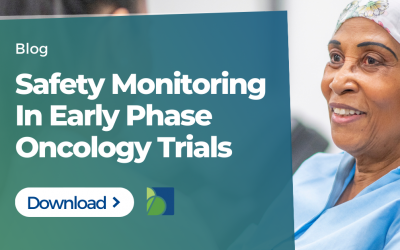So you want to improve your Clinical Trial expertise? Great! This field is snowballing and offers many opportunities for those with a suitable skill set. But before you dive in, it’s essential to know what clinical research is all about. This article gives you a rundown of the basics with options to explore in-depth articles related to Clinical Trials.
In this article, we share insight into:
- Authorities governing Clinical Trials
- Stakeholders in Clinical Trials
- Documentation needed for Clinical Trials
- Different Clinical Trial types
- Clinical Development Phases
- What activities are needed to perform a Clinical Trial
Important Authorties governing Clinical Trials
What is the EMA
The European Medicines Agency (EMA) is a decentralized body of the European Union (EU) responsible for the scientific evaluation of medicines developed by pharmaceutical companies for use in the EU.
The EMA’s main task is to protect public and animal health by ensuring that medicines available in the EU are high-quality, safe and effective. To do this, the Agency assesses all aspects of the quality, safety and efficacy of human and veterinary medicines submitted for approval by national authorities in the EU Member States.
The EMA also provides scientific advice to help applicants prepare marketing authorization applications for new medicines and supports them throughout the authorization process. In addition, the Agency coordinates the activities of expert groups involved in the assessment of applications.
What is the FDA
The FDA is the US Food and Drug Administration, a federal regulator responsible for ensuring the safety and efficacy of drugs in the United States. The FDA also oversees clinical research, ensuring that studies are conducted ethically and according to scientific standards. If you’re considering participating in a clinical trial, it’s important to understand the role of the FDA in ensuring the safety of participants and the validity of research results.
ICH Good Clinical Practice
The International Conference on Harmonisation of Technical Requirements for Registration of Pharmaceuticals for Human Use (ICH) is a set of international guidelines that aim to standardize the conduct of clinical trials. ICH Good Clinical Practice (GCP) is a guideline that sets out principles for the design, conduct, performance, monitoring, auditing, recording, analysis and reporting of clinical trials.
The purpose of ICH GCP is to protect the rights, safety and well-being of research participants and to ensure the high quality and validity of data generated from clinical trials. ICH GCP also aims to streamline the process of conducting multinational clinical trials by harmonizing standards across different jurisdictions.
To comply with ICH GCP, sponsors and investigators must adhere to some principles, including obtaining informed consent from research participants, ensuring the safety of participants, maintaining the confidentiality of participant data and managing conflicts of interest. Clinical trials must also be designed and conducted according to scientific and ethical principles, and data must be collected, managed and analyzed to minimize bias.
Which stakeholder are involved in Clinical Trials?
What is a sponsor?
A sponsor is typically a biotech/pharma company or Medical Device manufacturer that initiates, manages, and finances a clinical trial. In addition, the sponsor is responsible for ensuring that the clinical trial is conducted following the protocol and all applicable regulations.
What is an investigator?
An investigator is a person who initiates and conducts a clinical research study. In addition, the investigator is responsible for ensuring that the study is conducted according to the protocol and applicable regulations. Investigators are usually physicians but may also be pharmacists, dentists, or other health professionals.
What is the Ethical Committee
The ethical committee is an independent body responsible for ensuring that clinical research is conducted ethically. They review proposals for clinical trials and research studies to ensure they comply with ethical principles and guidelines. The ethical committee also monitors ongoing trials and studies to ensure they are being conducted ethically.
What is a Clinical Trial Material
A clinical trial material is any material used in a clinical trial, including drugs, devices, biologics, and diagnostics.
These Clinical Trial Materials are subject to strict rules (e.g.):
- Clinical trial materials must meet specific quality standards of the relevant national Competent Health Authority (e.g., EMA, FDA).
- Clinical trial materials also must be manufactured in compliance with the Good Manufacturing Practices (cGMPs).
- All clinical trial materials must be labelled with a unique Clinical Trial Number (CTN) identifier.
If you are a sponsor of a clinical trial, you are responsible for ensuring that all clinical trial materials used in the trial meet regulations.
If you are an investigator conducting a clinical trial, you must use only investigational products supplied by the sponsor or manufacturer in compliance with FDA regulations.
What is a Clinical Research Organization
A Clinical Research Organization (CRO) is a company that provides support to pharmaceutical and biotechnology companies during the clinical research and development process. A CRO can be involved in all aspects of clinical trials, from study design and patient recruitment to data management and analysis.
The increasing costs of drug development are driving the growth of the CRO industry, the need for more efficient clinical trials, and the outsourcing of clinical research by pharmaceutical companies.
CROs come in various shapes and sizes:
- There are several large multinational CROs, such as IQVIA, PPD, PRA Health Sciences, and Covance;
- Mid-sized CROs that cater to a specific audience like Biomapas;
- Small Cros per country that focus on local affairs.
When selecting a CRO, it is vital to consider their experience in running similar trials, geographical reach, financial stability, and scientific expertise.
What documentation is required for Clinical Trials
Documentation is critical to any clinical trial, as it provides essential information about the trial design, methodology, and results. The type and amount of documentation required for a clinical trial will vary depending on the regulations governing your trial.
Investigator Brochure
The investigator brochure is a document that contains information about a clinical study. It is given to the principal investigator (PI) of a study before the start of the study. The information in the brochure is designed to help the PI understand the study’s purpose, procedures, and risks.
The investigator brochure includes information on the following:
- Background and rationale for the study
- Study design
- Procedures
- Inclusion and exclusion criteria
- Primary and secondary endpoints
- Potential risks and benefits
- Compensation for participating in the study
The investigator brochure is an important document that helps PIs understand what they agree to when participating in a clinical study.
Clinical Protocol
If you are considering enrolling in a clinical research study, it is important to understand the process and what will be expected of you. A clinical protocol is a document that outlines the procedures and requirements for a study. It is essential reading for anyone considering participating in a clinical trial.
The protocol will describe the purpose of the study, eligibility requirements, procedures’ schedule, and what participants will expect. Therefore, it is essential to read the protocol carefully and make sure you understand everything before deciding whether or not to participate.
Clinical trials can be crucial in developing new treatments for cancer, heart disease, and Alzheimer’s. In addition, they offer hope to patients who may not have any other treatment options available to them. Participating in a trial can also be a way to contribute to medical knowledge and help future generations.
However, it is paramount to remember that clinical trials are also experiments, and there is always a risk that something could go wrong. The protocol minimizes these risks, but we can never eliminate them. Therefore, before enrolling in a study, ensure you are comfortable with the risks involved.
Which brings us to the Informed consent!
Informed Consent
Informed consent is a process through which a person learns about a clinical research study and decides whether or not to participate. The purpose of informed consent is to protect potential research participants by ensuring that they understand the risks and benefits of participation before making a decision.
The informed consent process begins with a researcher providing potential participants with information about a study, including its purpose, procedures, risks and benefits, and confidentiality protections. Potential participants can then ask questions and receive answers from the researcher. Once they have all the necessary information, they can decide whether or not to participate.
If you are considering participating in a clinical research study, it is important to ensure that you understand all the information presented to you. Take your time in deciding, and don’t hesitate to ask questions if there is anything you don’t understand. Participation in clinical research is voluntary, and you can withdraw at any time.
Sample Case Report Form (CRF)
A clinical research case report form (CRF) is a document used by sponsors and investigators to collect data from participants in a clinical study. The CRF includes information about the participant’s demographics, medical history, and other relevant information collected during the course of the study.
The CRF allows sponsors and investigators to track participants’ progress throughout the study and collect data in a consistent format. This helps to ensure that all data is captured and that the study results are accurate.
CRFs can be paper-based or electronic. Paper-based CRFs are typically used in small studies, while electronic CRFs are used in large studies.
If you are participating in a clinical study, you may be asked to complete a CRF. This document will help the sponsor and investigator to collect important data about your health and condition.
Which Clinical Trial Types are there?
There are many different types of clinical trials, each with its own purpose and goals. Here is a quick overview of the most common types of trials:
Observational Study
An observational study is a type of clinical research that involves observing and recording data on subjects without intervening in their care. This type of research is used to gain insight into real-world situations and to generate hypotheses that we can test in future studies.
There are two main types of observational studies: prospective and retrospective. In a prospective study, researchers collect subjects’ data before any interventions occur. This allows them to track outcomes more accurately and to control for confounding factors. Retrospective studies, on the other hand, involve collecting data on subjects after an intervention has already occurred. These studies are often used to assess a treatment’s effectiveness or identify risk factors for a certain condition.
Observational studies can be further classified into cohort and case-control studies.
- In a cohort study, subjects are followed over time and their outcomes are compared. This study assesses the cause-and-effect relationship between exposure and a health outcome.
- On the other hand, case-control studies compare subjects with a specific condition with those who do not. These studies can identify risk factors for a certain condition.
Cohort Study
A clinical cohort study is a type of medical research study that follows a group of people over time. Cohort studies are used to look at how factors such as lifestyle, environment, and genes affect health and well-being.
Cohort studies are usually conducted over many years, and can involve hundreds or even thousands of people. Because they follow a group of people over time, cohort studies can be used to track the development of diseases and other health conditions.
Cohort studies are an important tool for medical research, and have helped us to understand many important health issues. For example, cohort studies have been used to investigate the link between smoking and lung cancer, the link between obesity and heart disease, and the link between alcohol consumption and liver disease.
Case-Control Study
A case-control study is an epidemiological study used to identify risk factors for a particular disease or condition.
The study groups are typically defined as those with the disease or condition (the cases) and those without the disease or condition (the controls). Exposures of interest are then compared between the two groups.
Case-control studies are retrospective, meaning they look back in time to identify risk factors. As meant by observational, no intervention is attempted, and no attempt is made to alter the course of the disease.
The main advantage of case-control studies is that they are relatively quick and inexpensive. The main disadvantage is that they are subject to biases, including recall bias and selection bias.
Interventional Study
An interventional study is a type of clinical research that involves people. In an interventional study, researchers test new treatments, interventions, or devices in humans to see if they are safe and effective. These studies are also called clinical trials.
People who participate in interventional studies receive new treatments or therapies. The intervention might be a new drug, medical device, surgery, or another type of treatment. They may also be given a placebo, an inactive substance that looks the same as the active treatment but does not have any therapeutic effect. Placebo-controlled studies help researchers determine if a new treatment is more effective than no treatment.
In some cases, researchers compare a new treatment to another already available treatment. These studies help researchers determine if the new treatment is better than, worse than, or as good as the standard treatment.
Interventional studies are essential for developing new treatments and therapies. They help researchers learn whether a new intervention is safe and effective in humans before it is approved for use by the general public.
Pilot Study and Feasibility Study
Clinical research is a branch of healthcare science that determines the safety and efficacy of medications, medical devices, and diagnostic tests. These studies are essential to developing new treatments and can significantly impact public health.
Pilot studies and feasibility studies are essential parts of clinical research. Pilot studies help researchers to determine if a proposed study is feasible and gather preliminary data. Feasibility studies help researchers refine their study design and ensure that all the necessary resources are in place.
Pilot studies and feasibility studies are essential to the success of clinical research. Without these initial studies, moving forward with larger, more definitive trials would be difficult.
Screening Trial
A screening trial is a type of clinical research study used to determine if a new medical treatment is effective. This type of research is usually conducted on a small group of people with the same condition or disease. A screening trial aims to see if the new treatment can improve the quality of life for people with the condition or disease.
Prevention Trial
Prevention trials test whether a particular intervention can prevent disease or health conditions. These trials may involve healthy participants who have never had the disease or condition before or people who have already had it and are at risk of getting it again.
Multi-Arm Multi-Stage Trial
A multi-arm multi-stage trial (MAMS) is a type of clinical research study design used to evaluate new treatments’ safety and efficacy. This type of trial is typically used when there is a large amount of uncertainty about a new treatment’s potential benefits and risks.
MAMS trials are often conducted in phases, with each subsequent phase building upon the results of the previous one. For example, a Phase I MAMS trial may be conducted to assess the safety of a new treatment.
In contrast, a Phase II MAMS trial may be conducted to evaluate its efficacy. If a new treatment is found to be safe and effective in a Phase II MAMS trial, it may then be studied in a more extensive Phase III MAMS trial.
MAMS trials can be complex and expensive, but they offer an essential way to assess the safety and efficacy of new treatments.
Cross-Sectional Study
Researchers conduct this type of study to examine relationships between variables. In other words, researchers can use cross-sectional studies to examine the link between specific exposures and outcomes.
Cross-sectional studies are conducted using various methods, including surveys, interviews, and medical record reviews. We can use the data from these studies to estimate the prevalence of disease or risk factors in a population. Additionally, cross-sectional studies can be used to identify potential risk factors for diseases or other health conditions.
Rescue Study
Rescue studies are clinical research studies can be conducted when a new medical treatment is proposed for a life-threatening condition, and there is no time to wait for ethical approval. In such circumstances, the treating physician may request permission from the research ethics committee to administer the treatment to a patient without informed consent.
If you are considering participating in a clinical trial, it is important to understand all of the risks and benefits involved. While rescue studies offer hope to patients with life-threatening conditions, there is always the possibility that the new treatment may not be effective or may even cause harm. You should discuss your decision with your doctor and family members before making a decision.
Learn more about Rescue Studies.
Multi-Center Trial
A multi-centre (or centralized) trial is a type of clinical research study conducted (as the name implies) at more than one medical centre. Multi-centre trials can be used to test the safety and effectiveness of new treatments, diagnostic tests, or devices. We can also use them to gather information about rare diseases or conditions.
Multi-centre trials can be complex and expensive. They usually involve dozens, if not hundreds, of medical centre staff members working together. This is also why large pharmaceutical companies usually sponsor multi-centre trials.
They offer many benefits, including:
- The ability to test a new treatment in a large number of people
- The ability to compare the results of different treatments
- The ability to recruit patients from different geographic areas
- The ability to generate more reliable data
The drawbacks of centralized trials include the potential for bias, as the sponsor may be motivated to design the trial favourably to their product.
Conducting a multi-centre trial requires careful planning and coordination. If you are considering participating in a multi-centre trial, you must talk to your doctor or another healthcare team member about the risks and benefits.
Real-World Evidence
When it comes to clinical research, real-world evidence (RWE) is becoming increasingly important. RWE is defined as “the clinical evidence regarding the usage and potential benefits or risks of a medical product derived from sources outside of traditional randomized controlled trials”.
There are many benefits of using RWE in clinical research. For one, it can help to fill in gaps in our knowledge about a particular treatment or disease.
We can also use RWE to assess a treatment’s long-term safety and efficacy, which is often difficult to do with traditional clinical trials. Additionally, we can use RWE to inform decisions about which treatments are most effective for specific patient populations.
There are several ways to collect RWE, including observational studies, registries, and electronic health records.
- Observational studies involve observing patients who are already receiving a particular treatment or therapy.
- Registries track patients who are diagnosed with a certain condition or receive a particular treatment over time.
- Finally, electronic health records contain detailed patient health information and healthcare utilization.
RWE has the potential to transform clinical research and improve patient care. However, there are some challenges that need to be addressed to realize its full potential.
What phases are there for Clinical Trials
Clinical research is vital to the development of new medicines and treatments. Without clinical research, we would not have many of the life-saving medicines and treatments we have today. There are several stages a drug needs to go through before making its way to the patient. Each subsequent phase builds on the results of the previous one.
Shortly the Clinical Trial phases are:
Phase 0: is sometimes the first stage of clinical research. In phase 0 clinical research, minimal doses of new medicine are given to a small number of people. The purpose of phase 0 clinical research is to find out if the new medicine is safe and how it affects the body.
Phase I is the first testing phase and usually involves a small group of people. This phase aims to learn if a new drug is safe and what side effects it may cause.
Phase II is the second testing phase that usually involves a larger group. This phase aims to learn if the new drug works and what side effects it may cause.
Phase III is the third testing phase and usually involves an even larger group of people. This phase aims to confirm that the new drug works and to learn more about any side effects it may cause.
Phase IV: This fourth and final testing phase is done after the new drug’s approval by the relevant National Competent Health Authority and is on the market. The purpose of this phase is to monitor the safety of the new drug and to look for rare or long-term side effects.
Phase 0
Phase 0 clinical research is different from other types of clinical research because the doses of the new medicine are so small. Because of this, phase 0 clinical research does not usually produce any noticeable effects in patients.
Phase 0 clinical research is an important part of the development process for new medicines and treatments. It helps to ensure that new medicines are safe before they are given to more significant numbers of people in the later stages of clinical research.
Phase 1
Clinical research is an important process that helps to develop new treatments and medications. Phase 1 clinical trials are an essential part of this process.
Phase 1 trials are the first step in testing a new treatment or medication. These trials are usually small, with around 20-80 participants. These trials aim to test the safety of the treatment or medication.
During a Phase 1 trial, participants will be closely monitored by researchers. They will also be given regular check-ups to ensure the treatment is safe and has no adverse side effects.
After a Phase 1 trial is complete, researchers will analyze the data to see if the treatment is safe and effective. The treatment will move on to Phase 2 clinical trials if the results are positive.
Phase 2
A clinical trial is a research study in which people volunteer to take part in tests of new treatments, interventions or devices (medical devices, drugs, therapies and diagnostic tools). These studies are designed to determine whether the new treatment is safe and effective for humans.
Phase 2 trials usually involve a larger number of people than Phase 1 trials (100-300 people) and assess both safety and effectiveness. In addition, these trials aim to determine if the new treatment works and what side effects it might cause.
Phase 3
A Phase III clinical trial is the last stage of a long and complex process that begins with early-stage research in the laboratory.
If a new treatment is safe and effective in Phase 2 clinical trials, it will move on to Phase 3 trials. These large-scale trials involve more people (1000-3000) and are conducted over a more extended period. Phase 3 trials aim to confirm the new treatment’s efficacy and assess its long-term safety profile.
Phase III trials are often double-blinded, meaning that neither the participants nor the researchers know who is receiving the new treatment or the placebo. This helps to ensure that the results of the trial are not biased.
After a Phase III clinical trial is completed, the data from the trial is analyzed to see if the new treatment is safe and effective. If it is, then the treatment can be approved for use by the general public.
Phase 4
Clinical research is essential for the development of new treatments and medications. Without clinical research, we would not have the life-saving drugs and treatments we have today.
Clinical research is conducted in several phases, as we mentioned. The first three phases (Phases 1, 2, and 3) involve testing the safety and efficacy of a new treatment or medication in small groups of people. Finally, phase 4 clinical research is conducted after a treatment or medication’s approval and is available on the market.
Phase 4 clinical research is crucial because it allows researchers to monitor the long-term safety and effectiveness of a treatment or medication. It also helps to identify any rare side effects that might not have been seen in earlier phases of clinical research.
What documentation is required during Clinical Trials
Various federal agencies heavily regulate the clinical research process to protect participants’ rights and safety. As such, companies must complete numerous forms and documents for a trial to occur.
The first step is to develop a study protocol or plan, which outlines the objectives, procedures, and timeline and must be approved before any recruitment or data collection can begin.
Once approved, clinical trial sponsors will typically work with a contract research organization (CRO) to manage the day-to-day operations of the study. The CRO will be responsible for obtaining informed consent from all participants and ensuring that they are adequately screened and enrolled.
Throughout the trial, sponsors and CROs will collect a large amount of data that must be meticulously documented and monitored. This includes everything from participant medical records to adverse events during the study.
All of this documentation is essential in order to ensure that clinical trials are conducted ethically and in accordance with regulations.
Site Audit report
A clinical research site audit report is a document that contains the results of an audit of a clinical research site. In addition, the report includes a list of findings and recommendations for improvement.
Enrollment Reports
Enrollment reports are one of the most critical aspects of clinical research. They provide valuable information about the number of patients enrolled in a study, their demographics and other vital characteristics. we can use this information to improve future studies’ design and monitor ongoing studies’ progress.
Monitoring Visit Reports
Monitoring visits are a key part of clinical research. They help ensure that the research is conducted safely and according to protocol. Monitoring visits typically involve:
- Reviewing study documentation
- Observing study procedures
- Interviewing staff and/or participants
After the visit, the monitor will prepare a report detailing their findings. The CRA shares this report with the sponsor or CRO, and corrective action may be taken if necessary.
Source Documents
In clinical research, source documents are the original records that contain information about a study participant. Source documents include patient charts, laboratory test results, and pharmacy records.
Source documents are essential because they provide verifiable evidence of what happened during a clinical trial. We can use them to confirm that companies followed trial procedures, that data was collected accurately, and that participants were eligible for the study.
Source documents also play a key role in ensuring clinical data quality. Because they are the original source of information, we can use them to verify the accuracy of data entered into electronic databases or spreadsheets.
When reviewing source documents, researchers should pay close attention to any discrepancies between the data in the source document and the data in the electronic database. If there are discrepancies, it may be necessary to investigate further to determine which set of data is more accurate.
Close Out Report
One of the most important aspects of clinical research is the close-out report. This report includes all of the data collected during the study and the final results. The close-out report is used to determine whether or not the study was a success and if any changes need to be made to future studies.
Clinical Study Report
A clinical study report (CSR) is a document that contains the results of a clinical trial. It is also known as a clinical trial protocol, clinical study protocol, or clinical research report. The CSR is usually prepared by the trial sponsor and submitted to the regulatory authorities.
The CSR includes:
- Information on the background of the study;
- The design of the trial;
- The methods used;
- The results;
- The discussion.
It also includes information on any adverse events that occurred during the trial.
The CSR is an important document that helps the regulatory authorities to assess the safety and efficacy of a new medical treatment. Healthcare professionals also use it to make informed decisions about whether to use a new treatment.
What activities are needed to perform a Clinical Trial
Clinical Study Design
When designing a clinical study, there are many important factors to consider to create an effective and ethical research project. The first step is developing a straightforward research question to guide the study.
Once the question is established, the next step is selecting the appropriate study design to help answer the question. There are many different study designs, each with its own strengths and weaknesses. The most important thing is to select a design that will allow you to answer your research question as effectively as possible.
After the study design is selected, the next step is to develop a detailed protocol that outlines all study aspects. Finally, an ethics committee must approve the protocol before the study can begin. Once approved, you can then implement the study according to the plan laid out in the protocol.
Protocol Development
The clinical research process begins with the development of a protocol. The protocol is a document that outlines the objectives, design, methodology, statistical considerations, and organization of a clinical trial. The protocol also includes:
- Information on the investigational drug or device.
- Inclusion and exclusion criteria for participants.
- The planned length of the study.
The clinical trial sponsor develops the protocol in consultation with a team of clinical investigators. The sponsor is usually a pharmaceutical company, biotechnology company, or medical device manufacturer. The sponsor is responsible for conducting the trial following the protocol and ensuring that all applicable regulatory requirements are met.
Study Startup
The first step in starting a clinical research study is the initiation phase, which includes activities such as developing the study protocol, identifying and recruiting study sites, and obtaining IRB approval. Once the study is up and running, the sponsor or CRO will monitor its progress to ensure that it is being conducted according to the approved protocol and Good Clinical Practices (GCPs).
eTMF
eTMF is a system for storing and managing clinical trial documents electronically. We can use it to track documents from multiple sources, including sponsors, sites, and CROs.
An eTMF system can help streamline the clinical trial process by providing a central repository for all trial-related documents. This can make tracking and managing documents easier and ensure all stakeholders can access the most up-to-date information.
Quality Management
When it comes to clinical research, quality management is of the utmost importance. By ensuring that all aspects of the research process are up to standard, sponsors and investigators can be confident that the data collected will be reliable and accurate.
There are many different facets to quality management in clinical research, but some of the most important include study design, conduct, data management and analysis. To ensure quality at every stage, sponsors and investigators must work closely together and have a shared understanding of what is expected.
It is also essential to have clear and concise protocols in place that detail how each stage of the research should be carried out. By following these protocols strictly, it will be easier to identify any deviations from the norm that could impact the quality of the data.
By following these quality management guidelines, sponsors and investigators can be confident that their clinical research studies will meet all required standards and produce high-quality data.
Auditing
Clinical investigation is vital to ensuring that new drugs and treatments are safe and effective, so we must check them for quality. Part of this process is clinical auditing, which independent experts conduct. Clinical auditing helps ensure that the research is carried out correctly and by good clinical practice. It also helps to identify any areas where you can make improvements.
Clinical Safety Monitoring
Clinical research is vital to developing new drugs and treatments but can also pose risks to participants. That’s why clinical safety monitoring is so important.
Clinical safety monitoring involves ongoing assessment of the safety of participants in a clinical trial. This includes reviewing adverse events (AEs) during the trial and ensuring that they are appropriately managed.
AEs can range from minor side effects to serious injuries or even death. Therefore, it’s important to have a system in place to identify and track AEs so that researchers can evaluate a trial’s risks and benefits and ensure that participants are safe.
There are different types of clinical safety monitoring, including on-site visits, remote monitoring, and centralized review. Different trials will use different methods, but all should aim to protect the safety of participants.
Clinical Project Management
If you’re considering a career in clinical research, you’ll want to know about clinical project management. Clinical project managers are responsible for planning, executing, and completing clinical research studies. In addition, they work closely with investigators and other research staff to ensure that studies are conducted according to protocol and within regulatory guidelines.
Clinical project managers must have a strong understanding of the scientific process and effectively communicate with scientists and non-scientists. They must also be skilled in project management, including budgeting and scheduling.
Medical Writing
When communicating complex medical information, few people are as qualified as medical writers. Medical writing is a highly specialized form that requires a deep understanding of medical concepts and terminology. As a result, medical writers are in high demand by pharmaceutical companies, clinical research organizations, and healthcare providers.
Medical writers help to create educational materials for patients and caregivers, develop patient engagement strategies, and create content for scientific and medical journals. In addition, medical writers often play an indispensable role in developing clinical trial protocols and other research documents.
If you’re interested in a career in medical writing, there are a few things you should know. First, a strong background in science is essential. Medical writers need to be able to understand and interpret scientific data. In addition, excellent writing skills are essential, as is the ability to distil complex information into easy-to-understand language.
Medical Affairs
Clinical research is critical to the advancement of medicine and improving patient care. Medical Affairs ensures that clinical research is performed ethically and compliant with regulations. The goal of Medical Affairs is to protect patients and advance public health.
Medical Affairs also provides educational resources to healthcare professionals about clinical research and its importance. In addition, they work with investigators to help them design and conduct studies that will answer important questions about medical treatments and improve patient care.























